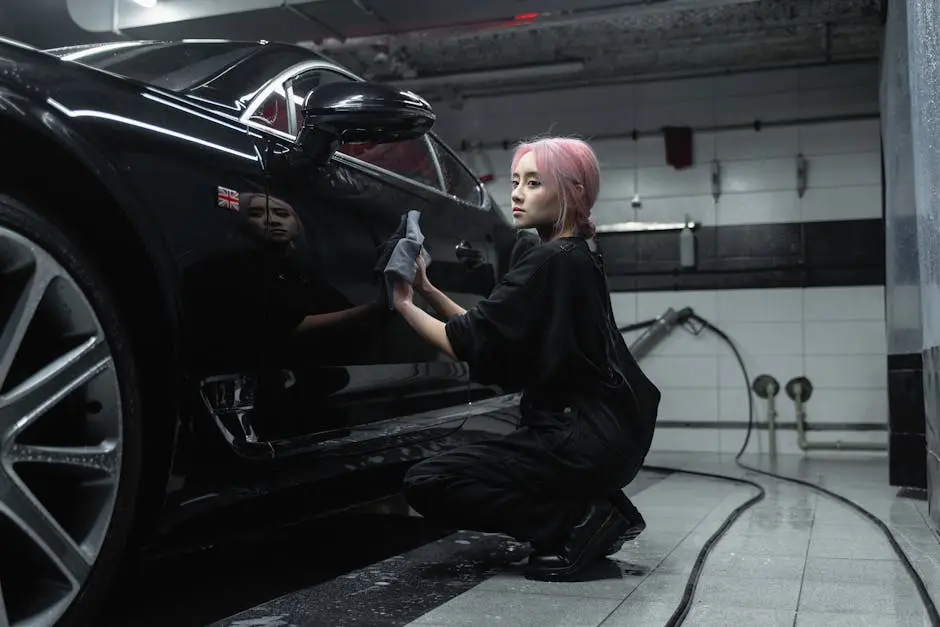Vehicle paint correction is an essential process for anyone looking to restore the shine and luster of their car’s exterior. However, a common question that many car enthusiasts and everyday drivers alike have is about the longevity of the results. In this blog, we will explore various factors that influence the duration of paint correction and provide insights on how to maintain that fresh look for as long as possible.

Factors That Affect Longevity of Paint Correction
Several factors can influence how long your vehicle paint correction lasts. One of the most significant factors is the quality of the products used during the correction process. High-quality compounds and polishes typically provide longer-lasting results compared to cheaper alternatives.
Another crucial element is the skill and experience of the technician performing the paint correction. A skilled technician knows the right techniques to apply and can ensure that the process is done correctly, leading to more durable results.
Environmental conditions also play a role in longevity. Exposure to harsh sunlight, rain, or road grime can wear down the protective layers that come from paint correction, reducing its lifespan. Keeping your vehicle sheltered or using protective coatings can significantly help.
Finally, the way you maintain your vehicle after the correction impacts longevity. Regular washing and careful drying techniques can prevent scratches and swirl marks that could diminish the appearance of the correction work.
In summary, the longevity of vehicle paint correction depends on a mix of product quality, technician skill, environmental factors, and post-correction care.
Understanding Different Types of Paint Correction
Paint correction comes in various levels, each designed for specific needs. Essentially, it involves removing imperfections like swirls, scratches, and oxidation to reveal the shiny layer beneath. Basic paint correction usually encompasses light polishing and is ideal for relatively new or slightly tarnished vehicles.
For vehicles with more severe damage, a multi-stage correction process is often required. This method can involve heavy compounding first to tackle deep scratches, followed by finer polishing stages to refine and perfect the surface. While this method provides exceptional results, it may not be as long-lasting without proper maintenance.
Additionally, there are different finishes you can achieve through various correction techniques. Some owners might desire a high-gloss finish, while others might prefer a matte look. Understanding these options can help you choose the right approach that aligns with your vehicle’s needs and your personal preferences.
Ultimately, knowing the type of paint correction applied to your vehicle will help manage your expectations for its longevity. As a rule of thumb, the more intensive the correction, the more meticulous you will need to be in maintaining that fresh appearance.
The relationship between paint correction type and durability cannot be overstated. Selecting the appropriate method for your car can result in longer-lasting aesthetics.
Role of Waxing and Sealing in Maintenance
After your vehicle undergoes paint correction, it’s crucial to protect that fresh look. This is where waxing and sealing come into play. These protective layers act as barriers against the elements, which can be detrimental to your newly corrected paint.
Waxing provides a thin layer of protection that enhances your vehicle’s shine while helping to repel dirt and moisture. Sealants, on the other hand, offer a longer-lasting shield, usually made from synthetic polymers that bond to the paint surface, often lasting several months.
Regularly applying either product can significantly prolong the effects of your paint correction. A well-maintained application every few months ensures that the protective layer remains intact, thereby safeguarding against UV rays, bird droppings, and road salts.
It’s also worth noting that while both waxing and sealing are beneficial, they serve different purposes. Wax enhances shine and hydrophobic properties, while sealant provides long-lasting durability. Depending on your driving conditions, you may opt for one or the other.
In conclusion, integrating a waxing and sealing routine into your car care schedule is essential to maximize the longevity of your vehicle’s paint correction and keep it looking pristine.
Common Mistakes That Shorten Paint Correction Life
While many car owners are eager to protect their vehicle’s aesthetics, some common mistakes can inadvertently shorten the life of vehicle paint correction. One frequent error is using the wrong cleaning products. Harsh chemicals or abrasive washes can strip away the protective layers established during the correction process.
Another misstep is neglecting routine maintenance. Failing to wash and wax your vehicle regularly exposes it to dirt and contaminants that can degrade the finish faster. It’s important to develop a consistent cleaning regime to mitigate this risk.
Over time, many owners may also forget about the impact of environmental factors. Parking in direct sunlight, for example, can cause UV rays to fade your paint correction. In contrast, parking under trees might expose your vehicle to sap and bird droppings. Finding a covered or shaded spot can help preserve your vehicle’s appearance.
Moreover, using automatic car washes with harsh brushes can create micro-scratches that diminish the results of paint correction. Opting for hand washes with gentle techniques can prevent this damage.
Ultimately, understanding and avoiding these common pitfalls will significantly extend the life of your vehicle paint correction. Investing wisdom and diligence in this area pays off immensely in the long run.
Final Thoughts on Vehicle Paint Correction Longevity
Understanding how long vehicle paint correction lasts can help you manage your expectations and encourage you to take the right steps to maintain your vehicle’s appearance. Regular maintenance and care can greatly extend the longevity of your paint correction and keep your car looking its best.

